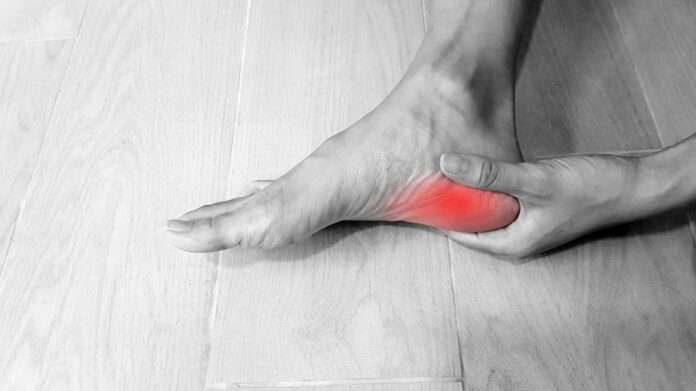If you’ve ever experienced sharp pain in your heel or arch first thing in the morning, you may be suffering from plantar fasciitis. This condition can be extremely painful and make everyday activities difficult. However, there are treatments available that can help relieve the pain and get you back on your feet. In this article, we will discuss what causes plantar fasciitis and how you can treat it.
What is Plantar Fasciitis?
Plantar fasciitis is a condition that results in pain in the heel and arch of the foot. It is caused by inflammation of the plantar fascia, a band of tissue that runs from the heel to the toes. Plantar fasciitis is a common condition, particularly among runners. However, it can also be caused by obesity, wearing shoes that do not support the arch of the foot, or standing for long periods.
Symptoms of plantar fasciitis include sharp pain in the heel or arch of the foot, pain that is worse in the morning or after periods of rest, and pain that increases with activity. If you are experiencing any of these symptoms, seeing a doctor for plantar fasciitis treatment in Roswell is essential so that you can get relief from the pain and get back to your normal activities.
How is Plantar Fasciitis Treated?
There are a number of plantar fasciitis treatments available. Rest, ice, and over-the-counter pain medications can help to reduce pain and inflammation. Physical therapy, stretching exercises, and custom orthotics can also help treat plantar fasciitis. In some cases, steroid injections or surgery may be necessary to relieve the pain. However, most cases of plantar fasciitis can be successfully treated with nonsurgical methods.
In addition to this, it will also benefit you if you check out whether plantar fasciitis is for life, as this will give you a better idea of what to expect and how to treat the condition if it does occur. And lastly, it is always best to consult with a professional when it comes to plantar fasciitis treatment, as they will be able to advise you on the best course of action for your specific case.
To Conclude
There you have it! A comprehensive guide to plantar fasciitis. We hope you found this helpful and that it gives you a better understanding of the condition. Remember, if you think you may be suffering from plantar fasciitis, you must contact a doctor or certified physical therapist for help. With the proper diagnosis and treatment plan, you can get back to your active lifestyle pain-free.






